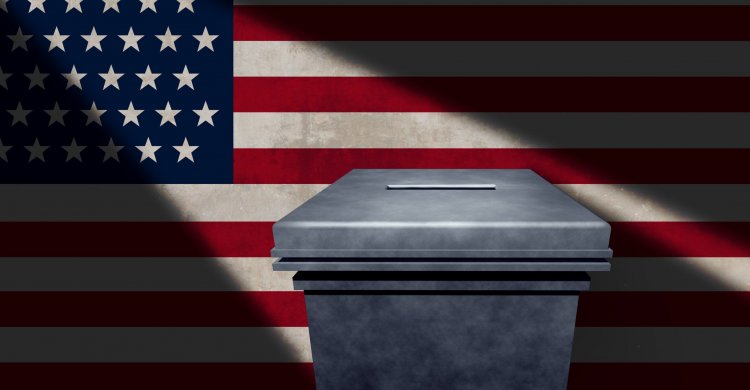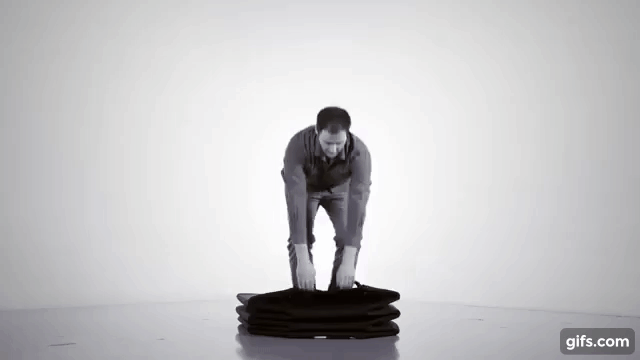Democrats Find New Ways to Play Race Card for Electoral Advantage
This is an adapted excerpt from Fred Lucas’ new book “The Myth of Voter Suppression: The Left’s Assault on Clean Elections,” now out from Bombardier... Read More The post Democrats Find New Ways to Play Race Card for Electoral Advantage appeared first on The Daily Signal.

This is an adapted excerpt from Fred Lucas’ new book “The Myth of Voter Suppression: The Left’s Assault on Clean Elections,” now out from Bombardier Books.
After Georgia Gov. Brian Kemp, a Republican, signed election reforms into law, several Democrats framed a talking point for their party by referring to the changes as “Jim Crow 2.0.”
Sen. Elizabeth Warren, D-Mass., tweeted of Kemp and his vanquished 2018 opponent Stacey Abrams, who never conceded defeat: “The Republican who is sitting in Stacey Abrams’ chair just signed a despicable voter suppression bill into law to take Georgia back to Jim Crow.”
The party of Jim Crow—the Democrats—can’t stop talking about Jim Crow. They simply found a new way to play the race card for electoral advantage.
The Democrats are accusing Republicans of trying to steal elections and attack democracy with the same dire predictions they’ve made since state voter ID laws became popular in the early 2000s, none of which came true.
First, it should be noted that the term “voter suppression” is rather vague. It is illegal under the 1965 Voting Rights Act to engage in voter intimidation or to act in a way threatening someone who is trying to cast a vote. Vote denial, which would be preventing a legally eligible voter from exercising his or her constitutional right to vote, and vote dilution, an intentional effort to dilute the votes of one group of people, are also illegal.
“You could search long and hard in the lawbooks containing the United States Code and nowhere will you find one single law that mentions voter suppression,” J. Christian Adams, a former Justice Department attorney who now is president of the Public Interest Legal Foundation, wrote in 2020. “That’s because voter suppression is a myth. It is a term made up to smear perfectly legal activities—like voter ID laws—by suggesting it is illegal.”
Real vote denial and voter intimidation were rampant after the end of Reconstruction that followed the Civil War until 1965, when Democrats imposed Jim Crow to manipulate voting laws to gain an electoral advantage. Today, Democrats invoke Jim Crow to manipulate voting laws to gain an electoral advantage.
Invoking is certainly better than imposing. But after Jim Crow laws became impossible to enact, Democrats had to pivot on strategy—while continuing the tried-and-true formula of identity politics.
Democrats are not just the party of Jim Crow but also the party of Tammany Hall and other machines. And to solve this supposed rampant voter-suppression problem, Democrats in Congress are pushing Tammany-style legislation with feel-good names such as HR 1, the “For the People Act,” to establish a legal structure for making fraud easier and installing long-term majorities.
Today, the competing narratives tend to be the Right’s concern about voter fraud and the Left’s concern about voter suppression. These twin evils actually walk hand in hand. Voter suppression was one form of fraud because this improperly skewed election outcomes. Likewise, fraud is a form of voter dilution (or suppression) because phony or ineligible votes ultimately cancel out or dilute the ballots cast by eligible voters.
Tammany Hall, and all the smaller corrupt machines spread throughout the United States, had the same ultimate mission as the bigots running the Jim Crow elections in the South—warping the election law and procedures to ensure Democrat victory.
The machine Democrats were best known for fraud, while the Democratic Party’s Jim Crow policies are most known for mass voter denial, violence, and intimidation of African Americans.
But the dastardly southern deeds also included methods identical to the northern Democrat machines, such as ballot theft, burning ballots, illegal arrests on Election Day, importing voters who lived outside the jurisdiction, and recording votes cast by dead or fictional people, according to U.S. District Judge Lynwood Smith, who did a report in 2011 on Jim Crow election practices.
Age of the Machines
In 1789, Aaron Burr, before he became the nation’s third and most sinister vice president, founded Tammany Hall. Lasting well into the early 20th century, the machine did more than enough to honor the scoundrel’s infamous legacy.
In what might make some Democrats proud today, Tammany worked to get prisoners released to ensure they voted, and even established a “naturalization mill” to instantly turn immigrants coming off boats into voters.
As The Washington Post explained, Tammany Hall bosses in New York “ushered hundreds of thousands on the Lower East Side and elsewhere into citizenship,” so they could register to vote and keep Democrats in power. The Post continued: “The machine paid court fees and provided witnesses to testify that immigrants had been in the country the required five years. Sometimes, usually before crucial elections, immigrants were sworn in as citizens the day they arrived.”
Similar Democrat powerhouses included the Pendergast machine in Kansas City; the Daley machine in Chicago, best known for its impact on the 1960 presidential election; and the Long machine in Louisiana.
It was the machines that resisted reforms to keep elections more honest. Today, the spirit of the machines lives on through Democrats in Congress who crank out legislation such as HR 1, along with various nonprofits battling against voter ID and other proposals.
Battle for the Secret Ballot
In the early days of the republic, elections were decided through voice voting—typically at town gatherings. When it wasn’t voice voting, then political parties distributed color-coded party “tickets,” which is defined as a slate of candidates handed out to voters to drop in the ballot boxes.
While it might be better than having to shout your vote, that bright, colorful, preprinted party ballot was always a dead giveaway to election officials who the vote was for.
This accepted method began to change in the middle of the 19th century but—similar to the commonsense ID laws of today—those changes did not come easy, either.
The intellectual predecessors to liberal groups such as the Brennan Center for Justice and Fair Fight Action were the political machines that didn’t want their favorable system to change. They launched extraordinarily similar arguments against a secret ballot that their successors use today against voter ID, clean voter rolls, and the curbing of ballot harvesting.
It wasn’t until 1856 that some localities in the United States first adopted what was called the Australian ballot system. Today, it’s just known as the secret ballot.
It might seem puzzling today to understand why anyone would object to a secret ballot. In that era, though, there was plenty of resistance to such laws. The publicly stated reason was—you guessed it—voter suppression.
Illiteracy rates were high in the 1800s, and either voice voting or color-coded ballots for a party’s slate of candidates arguably made the enfranchisement broader than entering a private voting booth, closing the curtain, and selecting from a menu of competing party nominees.
A secret ballot was what would be called today a “restrictive” form of voting. There was no one for a voter to talk to or get advice from, which arguably had a disproportionate impact on the poor. As it turned out, the secret ballot did not produce the horrifying mass voter suppression that entrenched machine politicians warned about.
Nevertheless, the argument might not be settled as you would think.
“Given that some of what [Donald] Trump said during or before the campaign was so racist, xenophobic and misogynist, naturally voters might not want to be associated with it. The secret ballot provided them the luxury of voting for him anyway,” a Washington Post op-ed in 2017 argued. “If a candidate acts in indefensible ways—and one must recall that throughout the campaign even the GOP leadership often refused to defend Trump—it is the voters who ultimately bear responsibility for defending him. The secret ballot allowed many of them to get away with never having to do so.”
This is not a mainstream view on the left—yet. But one of the nation’s largest newspapers published it. And some of the congressional proposals in the election nationalization bills such as HR 1 that would take a wrecking ball to the most basic election security standards seemed unthinkable just a few years ago.
Have an opinion about this article? To sound off, please email letters@DailySignal.com and we’ll consider publishing your edited remarks in our regular “We Hear You” feature. Remember to include the url or headline of the article plus your name and town and/or state.
The post Democrats Find New Ways to Play Race Card for Electoral Advantage appeared first on The Daily Signal.
















